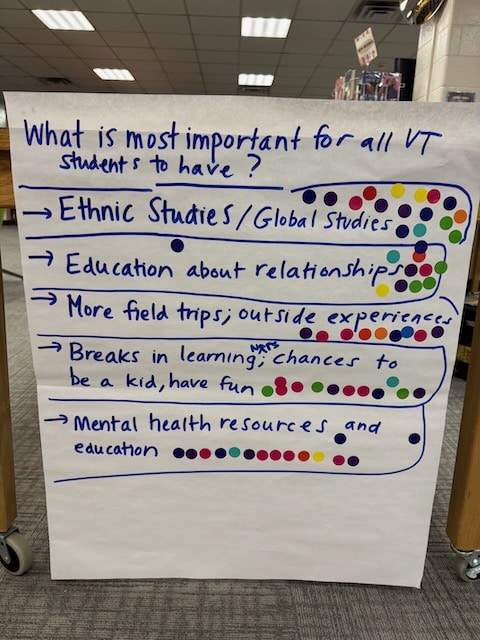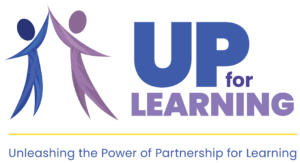
This fall, the Vermont Agency of Education (AOE) held school and community Listen and Learn Tour events to invite the public into discussions informing how the Agency can work to support Vermont’s education system.
These conversations were an opportunity for school administrators, staff, and the public to share their views on the state of education in Vermont. However, a key perspective was missing. Recognizing that student participation was essential, the AOE partnered with UP For Learning to continue the AOE Listen and Learn engagement series by facilitating sessions specifically for Vermont students.
Over the last two weeks, UP for Learning youth and adult facilitators led eight sessions to ensure that youth voice is reflected in the AOE’s Listen and Learn report which will guide strategic planning.
UP’s team and the AOE staff collaboratively developed questions and planned protocols to support young people in sharing their thoughts about topics related to school policies, practices, and resources. As the main consumers of education, youth have important insight into what “equitable access to high-quality educational opportunities” looks like and means to them now and for their futures.
During the sessions, the participants considered questions like:
- What about your school makes you proud?
- What is a challenge at your school?
- What resources does your school need to be better?
- What is something you think every student in Vermont should have at school?
With these questions, UP and the AOE hoped to get a sense of both universal and more regional or school-specific needs to paint a picture of the similarities and differences between Vermont schools and communities. As one administrator said: “We appreciated the students’ reflections and the process.”
The eight school/district-based sessions were held throughout the state, from Island Pond to Townshend. Each session lasted approximately an hour and a half during the school day. Together, UP heard from over 150 students in grades 6-12. Their insights were recorded and a youth-adult team from UP worked to identify themes in the data before sharing our findings with the partners at the AOE.
Across the schools, youth valued skilled and supportive educators, strong school communities, opportunities for experiential, hands-on, and project-based learning, arts/music/physical education, sports and extracurricular activities, and opportunities to be with friends and make new ones. The participants noted concerns with infrastructure and accessibility issues, inconsistencies in discipline and grading, reduced staff, and lack of mental health resources as concerns. UP’s findings will be integrated into the report that will be sent to the Commission on the Future of Public Education.
The team at UP hopes to support continued youth engagement in state-level education decision-making as this work progresses, knowing that young people bring key insights and an eye towards educational equity to these conversations.

